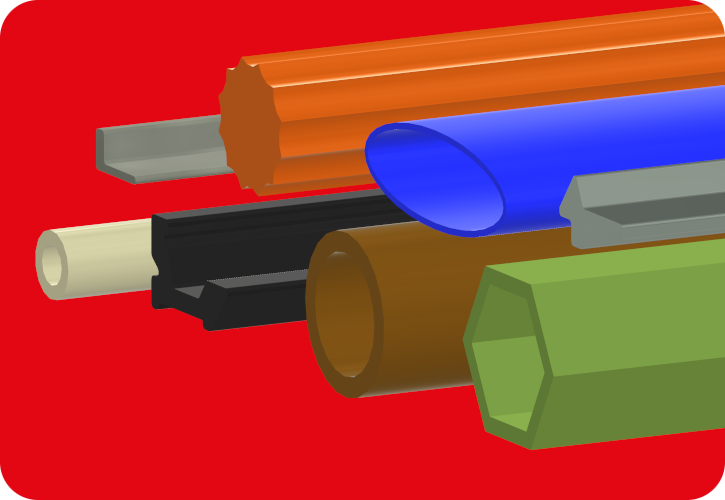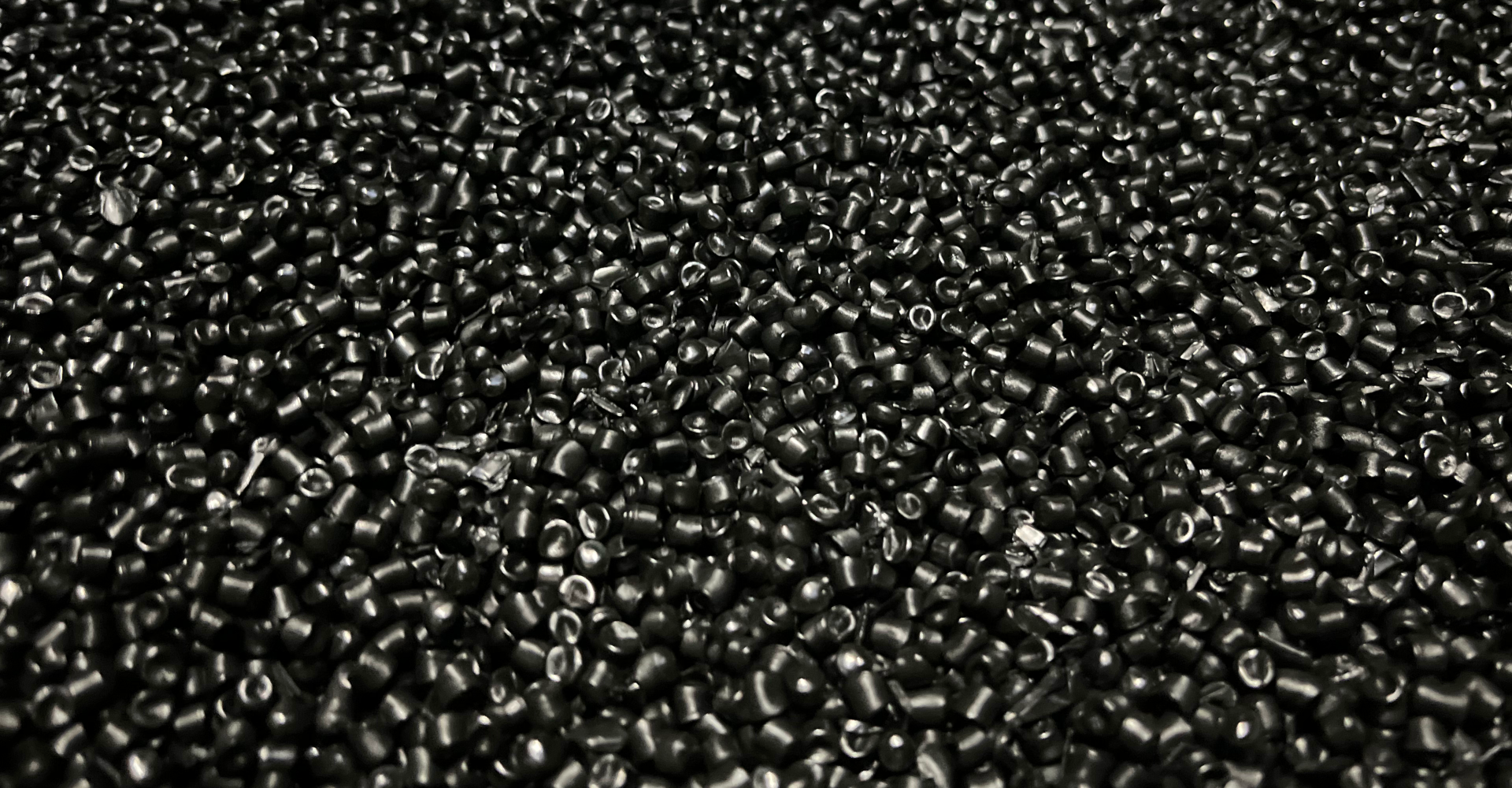Polyurethan – PUR
Engineering Plastic
In General | Technical Data of PUR | Advantages | Tradenames of PUR

Plastic Profiles made of Polyurethan – PUR
Polyurethane elastomers, or PUR for short, is one of the engineering plastics. Unlike PE or PVC, polyurethane does not consist of pure repeating identical monomers, but always of a chemical mixed structure of different monomers.
The properties of PUR can vary widely. The decisive factor is the degree of crosslinking. This classifies the plastic as a thermoplastic, thermoset or elastomer. Binder + Wöhrle limits its processing to the thermoplastic variants.

The chemical structure of PUR consists of polyisocyanates and polyesters or polyethers containing hydroxyl groups. In some variants, crosslinking agents are necessary. The thermoplastic structure consists of hard and soft molecule segments. The ratio of these segments determines the relative hardness while still retaining flexibility. The soft segments determine the elasticity and the behavior at low temperatures. The hard segments determine the hardness and the behavior at high temperatures.
Binder + Wöhrle processes PUR in the field of plastic extrusion and injection molding. B + W has different types in use and produces customer-specific plastic pipes, hoses -profiles, jackets, ¬connectors and much more in the diameter range 0.5 – 50 mm.

Technical Data
- PUR
- Density: 1,0 -1,25 g/cm³
- Tensile Strength: 70-80 N/mm²
- Minimum Temperatur continuous: -40°C
- Maximum Temperatur continuous: 80°C
Advantages of Polyurethan – PUR
+ Very good abrasion resistance
+ High strength
+ Flexible, even at low temperatures
+ low weight
+ good insulating properties

Tradenames of Polyurethan
Elastolan, Desmopan, Apilon, Irogran, Hytrel …


